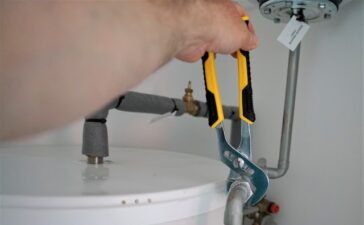A battery isolator is a one-way electrical battery that only allows one electrical current channel to pass. When numerous batteries are required, a battery isolator is typically utilized, and its principal role is to ensure that the failure of a single battery does not render a complete electrical system unworkable. Battery isolators are used in large trucks, aircraft, boats, utility vehicles, and other vehicles that require several batteries and backup power sources.
To guarantee that a vehicle has access to a backup power supply, the redarc battery isolator divides several batteries from one another. A battery isolator also prevents the electrical system of a car from drawing power from many batteries at once, which would quickly exhaust all the batteries and lead to the electrical system failing. Two batteries in a car that are both connected to the isolator constitute a straightforward arrangement. The vehicle’s alternator, which is in charge of supplying the engine with fuel and charging the battery, is where the battery isolator is located. The battery isolator utilizes sensors to count the batteries it is linked to and choose the one with the most power. The alternator charges the inactive batteries, and the battery isolator has a backup power supply in case the active battery fails unexpectedly.

Diode isolators and solenoid isolators are the two primary categories of battery isolators. A diode isolator directs the flow of electricity from the battery to the battery isolator using two high-current diodes. A diode isolator is less complicated, easier to maintain and repair, and often lasts longer than a solenoid isolator. To regulate the flow of electrical current, a solenoid isolator employs several electrical relays. While the central relay (the other relay) keeps an eye on the power levels of the idle batteries, one of the relays gets electrical current from the battery. Additional relays deliver the alternator’s charging electricity to the dormant batteries. A solenoid battery isolator is more effective and has less current degradation than a diode isolator.
Through the creation of a fluctuating electromagnetic field, an alternator transforms mechanical energy into electrical energy. An alternating current signal is produced when this field is induced across the alternator windings. However, a car’s electrical equipment needs direct current electricity. The flow of electrical energy goes through a rectifier, which is a collection of six or more diodes. The rectifier transforms the alternator’s output of alternating electricity into direct current, which the car may use.

Sometimes electrical components malfunction. There is frequently a brief surge of energy released back into the electrical system when a component dies suddenly. Most electrical components are normally shielded from feedback by a fuse, however, the alternator is typically not covered by a fused circuit. Because diodes only let electrical current flow in one direction, the polarity of direct current electrical energy is always positive at one end of a chain of diodes and negative at the other. A battery cannot charge while an alternator is running unless the energy it receives has the same polarity (positive to positive, negative to negative). In a rectifier, the diodes function as a one-way check valve to maintain constant polarity while the battery is being charged.





